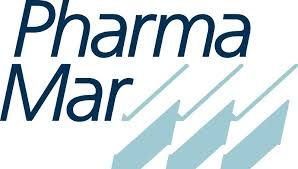预约演示
更新于:2025-05-07

Nanjing Luye Pharmaceutical Co., Ltd.
更新于:2025-05-07
概览
标签
肿瘤
神经系统疾病
泌尿生殖系统疾病
小分子化药
脂质体药物
CpG ODN
疾病领域得分
一眼洞穿机构专注的疾病领域
暂无数据
技术平台
公司药物应用最多的技术
暂无数据
靶点
公司最常开发的靶点
暂无数据
| 排名前五的药物类型 | 数量 |
|---|---|
| 小分子化药 | 4 |
| 脂质体药物 | 3 |
| mRNA | 1 |
| 治疗性疫苗 | 1 |
| mRNA疫苗 | 1 |
关联
17
项与 南京绿叶制药有限公司 相关的药物靶点 |
作用机制 DNA抑制剂 |
在研机构 |
原研机构 |
最高研发阶段批准上市 |
首次获批国家/地区 美国 |
首次获批日期2020-06-15 |
靶点 |
作用机制 微管蛋白抑制剂 |
在研机构 |
原研机构 |
最高研发阶段批准上市 |
首次获批国家/地区 中国 |
首次获批日期2003-01-01 |
靶点 |
作用机制 PSMA抑制剂 |
在研机构 |
原研机构 |
在研适应症 |
最高研发阶段临床3期 |
首次获批国家/地区- |
首次获批日期- |
20
项与 南京绿叶制药有限公司 相关的临床试验CTR20234323
评价LY01610(盐酸伊立替康脂质体注射液)对比托泊替康在复发性小细胞肺癌(SCLC)患者中疗效和安全性的多中心、随机、开放、平行设计III期临床研究
主要目的
比较LY01610与托泊替康静脉输注治疗一线含铂化疗失败SCLC患者的总生存期(OS);
次要目的:
比较LY01610与托泊替康静脉输注治疗一线含铂化疗失败SCLC患者的无进展生存期(PFS);
比较LY01610与托泊替康静脉输注治疗一线含铂化疗失败SCLC患者的客观缓解率(ORR)、缓解持续时间(DoR)、疾病控制率(DCR)等指标;
评价LY01610对比托泊替康静脉输注治疗一线含铂化疗失败SCLC患者的安全性;
评价LY01610与托泊替康对患者报告结局(PRO)的影响;
评价LY01610与托泊替康在两种SCLC人群(CTFI*<90天、CTFI≥90天)中的ORR、DoR、PFS、OS;
评价LY01610在小细胞肺癌患者体内的药代动力学(PK)特征。
* CTFI:含铂化疗停疗至复发/进展间隔时间
探索目的:
评价UGT1A1*6与*28基因多态性对LY01610药代动力学的影响;
评价UGT1A1*6与*28基因多态性对LY01610有效性与安全性的影响。
开始日期2024-02-22 |
申办/合作机构 |
CTR20220818
在中国晚期乳腺癌受试者中比较LY01612(盐酸多柔比星脂质体注射液)和CAELYX®药代动力学特征的多中心、随机、开放、单剂量、两周期、双交叉生物等效性研究
主要目的:
与参比制剂CAELYX®比较,评价受试制剂LY01612(盐酸多柔比星脂质体注射液)在中国晚期乳腺癌受试者中单次给药的药代动力学行为,评价两种制剂的生物等效性。
次要目的:
比较受试制剂和参比制剂在中国晚期乳腺癌受试者中的安全性。
开始日期2022-05-17 |
申办/合作机构 |
CTR20212925
评价注射盐酸罗哌卡因脂质体混悬注射液(LY09606)局部浸润用
于痔切除术受试者的安全耐受性、药代动力学特征和有效性的随
机、双盲、阳性药及安慰剂对照Ia 期研究
评价LY09606 局部浸润用于痔切除术受试者术后镇痛治疗的安全耐受性、有效性、药代动力学特征。
开始日期2022-01-25 |
申办/合作机构 |
100 项与 南京绿叶制药有限公司 相关的临床结果
登录后查看更多信息
0 项与 南京绿叶制药有限公司 相关的专利(医药)
登录后查看更多信息
9
项与 南京绿叶制药有限公司 相关的文献(医药)2024-09-01·eClinicalMedicine
Phase 2 dose-ranging study to evaluate the efficacy and safety of liposomal irinotecan (LY01610) as a second-line treatment for patients with relapsed small cell lung cancer
Article
作者: Wang, Yingchun ; Xiao, Ke ; Wang, Pu ; Zeng, Jia ; Guo, Jun ; Wang, Shanbing ; Zhang, Lei ; Cheng, Guang ; Xing, Puyuan ; Bi, Minghong ; Ren, Biyong ; Pan, Yueyin ; Gao, Emei ; Li, Weidong ; Wang, Xicheng ; Gan, Tianyi ; Liu, Yong ; Shi, Yuankai
2021-12-01·Journal of Experimental & Clinical Cancer Research
Correction to: Lentinan inhibits tumor angiogenesis via interferon γ and in a T cell independent manner
作者: Deng, Shengming ; Kuai, Jiajie ; Yang, Dan ; Huang, Yuhui ; Fan, Peng ; Zhou, Pei ; Zheng, Xichen ; Wu, Qunli ; Liu, Xiaomei ; Wang, Xuexiang ; Zhang, Guoxi
2021-01-01·Theranostics1区 · 医学
Utilization of circulating cell-free DNA profiling to guide first-line chemotherapy in advanced lung squamous cell carcinoma
1区 · 医学
ArticleOA
作者: Guo, Qisen ; Wang, Guangfa ; Jiang, Da ; Jiang, Tao ; Zhang, Henghui ; Fan, Yun ; Wang, Ziping ; Hu, Xiaohua ; Gu, Kangsheng ; Chen, Kai ; Yao, Wenxiu ; Song, Yong ; Zhao, Yi ; Peng, Min ; Cui, Jiuwei ; Yi, Tienan ; He, Jianxing ; Zhao, Guangqiang ; Li, Yuping ; Wu, Lihong ; Xie, Wenmin ; Shi, Qin ; Xiong, Jianping ; Dong, Xiaorong ; Zang, Aimin ; Zhou, Caicun ; Ren, Shengxiang ; Liang, Dandan ; Zhao, Weihong ; Zhang, Xiaochun ; Tan, Wei ; Fang, Lu ; Hu, Chunhong ; Zhang, Guojun ; Liu, Junfeng ; Jiang, Liyan ; Wu, Xiaohong ; Yu, Guohua ; Wang, Huijuan ; Chen, Gongyan ; Li, Junling ; Yue, Lu ; Yang, Nong ; Pan, Yueyin
50
项与 南京绿叶制药有限公司 相关的新闻(医药)2025-04-03
·融中财经
导读THECAPITAL科技巨头的AI投资系列——谷歌篇本文3750字,约5.4分钟作者 | 英贤来源 | IT桔子Alphabet(谷歌)作为互联网时代的科技巨头之一,在AI技术重塑世界的浪潮中勇立潮头,不仅通过自有的产品和服务推动AI发展,也通过风险投资,赋能初创企业,积极参与全球AI创业生态的构建。作者根据IT桔子和Crunchbase的公开数据统计,2014年以来,Alphabet(谷歌)共对外投资 1586 起,其中AI领域271起,占比 17.1%。2022年以后,AI领域的投资事件占总投资事件的数量的比例逐年攀升——从 2022年仅占比13.1%,到2024年的32%。这种现象的背后既有技术趋势的推动,也反映出Alphabet(谷歌)资源对AI赛道的倾斜。2015年,谷歌内部组织架构进行重组后,变成了由Alphabet控股的公司,旗下投资主体呈现「4+1」的投资体系,分别是旗下最活跃的风险投资部门Google Ventures(GV)、最早从事投资的主体Google、以投资中后期项目为主的成长型基金Capital G和2017年成立的专投人工智能的基金Gradient Ventures,在少数情况下 Alphabet 也会亲自开展对外投资。其中,Google Ventures(GV)、Gradient Ventures、Google是主要的AI投资主体,共投资301起 AI事件,占总投资事件数量的90%以上。其中,Google Ventures共投资AI领域119起,Gradient Ventures 共投资AI领域87起,Google共投资AI领域39起。从投资轮次分布上可以看出,谷歌在AI领域的投资呈现「早期为主,全周期覆盖」的特征。早期投资占比最高,达51%,其中种子轮投资事件72起,占比 27%,A轮65起,占比24%。Alphabet(谷歌)旗下不同的投资主体侧重于投资AI行业不同的周期。Gradient Ventures 作为 AI 专项基金,聚焦于技术萌芽阶段,通过早期注资锁定AI前沿领域,其中种子轮43起,A轮25起,占其总投资事件比例78%,例如对3D设计工具Spline的种子轮投资、对企业级生成式AI平台Writer的A轮投资,投资金额以千万美元级别为主。CapitalG作为成长型基金,则聚焦已验证商业模式的AI企业,通过中后期注资帮助企业扩大市场规模、优化技术商业化路径,如对AI金融信息服务公司Alpha Sense的F轮投资,助推其从技术产品向成熟商业服务转型。在其21起总投资事件中,中后期投资事件有15起,占比 71%。Alphabet(谷歌)在人工智能领域的投资中,应用层占据绝对主导,超一半(53%)的投资事件集中于AI应用层,体现了对技术商业化落地的重视。应用层中以行业应用层为主,涵盖医疗、企业服务、金融、法律等多行业的AI解决方案。具体投资情况如下表:医疗+AIAlphabet(谷歌)对医疗领域的AI行业应用投资共22起,涉及13家公司,主要集中在三大场景,分别是临床决策支持(如医学影像协调工具Viz、心血管AI诊断 Ultromics),流程自动化(如理赔管理AI Olive、电话流程自动化工具 INfinitus),健康管理(如血糖分析Signos、帮助神经多样性支持产品 Spectrums AI)。Alphabet(谷歌)对AI精准医疗公司Owkin、基于AI的医学影像协调工具 Viz、AI自动化放射学报告编写公司Rad AI各出手3次。单次投资金额最高的是美国医疗对话AI服务商Abridge,今年2月份由 CapitalG投资25000万美元。企业服务+AI从公开数据看,Alphabet(谷歌)在企业服务+AI领域的投资有13起,涉及8 家公司,投资主要聚焦在企业核心痛点场景,即客户服务智能化、商业决策自动化和运维管理精细化三大方向,通过Gradient Ventures、Google Ventures、CapitalG三大投资主体的协同运作。Gradient Ventures 作为早期投资主力,重点关注具备技术潜力的初创公司,2022年两次投资Zowie的种子轮和A轮,支持其开发定制化AI客服系统,帮助电商企业减少40%的人工客服介入率。Google Ventures则倾向于中期投资,通过多轮注资推动企业规模化发展,如连续对UJET的B、C、D轮累计投资1.56亿美元,帮助其成长为全球前三的云客服平台。CapitalG则聚焦后期整合,连续参与AlphaSense的D、E、F轮中后期融资,助力其成为金融行业AI洞察标杆,服务贝莱德、摩根士丹利等机构。金融+AI在金融行业应用领域,Alphabet(谷歌)出手9次,投资5家公司,其中 Gradient Ventures 以出手7次占绝对主导(占比77.8%),均为种子轮和A 轮投资,并且在Spade、Fazeshift、Arva AI公司的种子轮投资中担任领投方。Google Ventures出手2次,分别投资金融科技公司Digits B轮和C轮。值得一提的是,Alphabet(谷歌)对金融领域的投资集中在2022年后,与AI 在金融领域的应用爆发期高度吻合,显示谷歌对技术商业化节奏的精准把握。当AI成为基础设施,能快速整合技术、数据和场景的公司,将掌握未来商业的钥匙。从医疗AI的精准诊断到金融科技的智能风控,从企业服务的效率革命到自动驾驶的场景落地,Alphabet(谷歌)的AI投资正在重塑多个行业的底层逻辑——不仅改变企业运营方式,更在悄然重构行业竞争规则。Alphabet(谷歌)投出过多家独角兽和上市公司,下面选取部分案例进行展示:Anthropic:以安全为核心理念的AI独角兽崛起之路Anthropic成立于2021年,由OpenAI前核心成员 Dario Amodei等人创立,是一家专注于通用人工智能(AGI)研发的初创公司。其核心产品为 Claude 系列大语言模型,强调「可解释性」与「安全性」,旨在构建符合人类价值观的 AI 系统。Anthropic 通过「宪法式 AI」(Constitutional AI)技术框架,将伦理规则嵌入模型训练过程,使其在内容生成、逻辑推理等任务中主动规避偏见与有害输出。这一技术差异化使其在生成式AI赛道中迅速崭露头角,成为 OpenAI 最强劲的竞争对手之一。Anthropic 自成立以来,经历14轮融资,累计融资额突破130亿美元,融资历程呈现高频、大额的特点,反映了资本市场对头部AI企业的狂热追逐:2021-2022 年:A 轮(1.24 亿美元)与 B 轮(5.8 亿美元)由新兴风投 Center for Emerging Risk Research 主导,资金主要用于技术验证与团队扩张。2023 年:全年完成 6 轮融资,总额超 16 亿美元。C 轮引入谷歌、Spark Capital 等巨头,战略投资方如亚马逊、SK Telecom 的加入,标志着 Anthropic 从纯技术研发转向商业化落地。2024-2025 年:D 轮(数亿美元)与 E 轮(35 亿美元)进一步吸纳高通、思科等产业资本,光速创投领投的 20 亿美元战略投资及谷歌追加的 10 亿美元注资,为其全球市场拓展与算力储备提供弹药。Alphabet(谷歌)对 Anthropic 的投资是谷歌多元化其 AI 业务、与微软、Meta、亚马逊等资金雄厚的竞争对手抗衡的一部分,对 Anthropic 出手 4 次,累计投资超 30 亿美元:2023 年 2 月,谷歌 Google 独家投资 3 亿美元;2023 年 5 月,由 Spark Capital 领投,谷歌 Google 等多家公司跟投 C 轮,总投资 4.5 亿美元;2023 年 10 月,CapitalG 战略投资 20 亿美元;2025 年 1 月,谷歌 Google 战略投资 10 亿美元;在资本催化下,AI 竞赛已从单点技术突破演变为算力、数据、场景的立体战争,Anthropic 凭借先发优势占据战略高地,但面对 OpenAI 的持续压制与科技巨头自研模型的围剿,能否将伦理护城河转化为可持续的商业模式,仍需时间检验。Harvey:法律AI赛道的资本宠儿与垂直颠覆者Harvey成立于2022年,总部位于美国,是一家专注于法律垂直领域的人工智能服务商。其核心产品为AI法律助手,通过自然语言交互帮助律师自动生成法律文件、检索案例、起草合同,并支持多轮对话优化输出结果。与通用型AI工具不同,Harvey 深度集成法律行业知识库与判例数据库,结合GPT-4等大模型技术,实现「零代码」操作体验——律师仅需用日常语言描述需求(如「起草一份加州房产买卖协议模板」),系统即可生成符合法律规范的可交付成果,准确率声称达95%以上。目前服务已覆盖合同审查、诉讼文书准备、合规咨询等场景,客户包括美国50强律所中的12家及企业法务部门。Harvey成立三年内完成5轮融资,累计吸金超4.5亿美元:2022 年 11 月,获 500 万美元的种子轮投资,投资方有 Open AI、Elad Gil、Convivtion Partners;2023 年 5 月,获 2000 万美元的 A 轮投资,红杉资本领投,Open AI、Elad Gil 继续跟投;2023 年 12 月,获 8000 万美元的 B 轮投资,投资方包括 Kleiner Perkins Caufield & Byers(KPCB 全球)、红杉资本、OpenAI。2024 年 7 月,完成 1 亿美元 C 轮融资,Google Ventures(GV)领投,OpenAI、KPCB 全球、红杉资本跟投。投后估值 15 亿美元,晋升成为独角兽。2025 年 2 月,完成 3 亿美元 D 轮融资,红杉资本领投,Conviction Partners、Google Ventures(GV)、KPCB 全球、Coatue Management、REV、EladGil 及 OpenAI Startup Fund 参与投资。OpenAI与Google Ventures(GV)对Harvey的连续加注,堪称生成式AI投资史上的标志性事件——两家本在通用大模型领域激烈交锋的巨头,竟罕见地在垂直赛道形成「资本同盟」,背后折射出法律AI的战略价值与资源争夺逻辑。OpenAI与Google的竞相投资,本质上是对「法律AI基础设施标准制定权」的争夺。当巨头们意识到通用模型难以通吃所有行业时,通过资本控制垂类头部玩家,便成为构建生态护城河的最短路径。对于创业公司而言,选择「站队」或许意味着丧失独立性,但拒绝巨头橄榄枝,则可能在新一轮算力竞赛中窒息而亡。Harvey的抉择,或许正在重定义AI创业的生存法则。出门问问:生成式AI赛道中的商业化突围困境出门问问(Mobvoi)成立于2012年,由前谷歌科学家李志飞创立,定位为以生成式AI与语音交互为核心的人工智能公司。其核心产品包括自研大模型「序列猴子」、AI配音助手「魔音工坊」(海外版 DupDub)、数字人分身「奇妙元」等,覆盖内容创作、企业服务与智能硬件三大领域。公司早期以智能手表 TicWatch切入消费电子市场,后转型押注AIGC,致力于构建「一站式内容创作平台」。出门问问的融资历程呈现阶段性的特点。2013-2015年间,出门问问融资节奏快,相继获得红杉中国、真格基金、SIG 海纳亚洲等机构的天使轮、A轮、A+轮、B轮等4轮投资;2015年10月,获得Google谷歌4000万美元的 C 轮投资;2015-2019年,这段时间出门问问以两年获得一次融资的频率发展,2017年获大众汽车1.4亿美元的D轮投资,2019年9月获得Google谷歌1687万美元的D+轮投资;接下来的2019-2024年长达5年的时间里,出门问问未获新融资。直到2024年4月24日,出门问问以「港股AIGC第一股」身份IPO,募资2.67亿港元。但上市后股价迅速破发,跌幅超90%,市值缩水至不足6亿港元,基石投资者浮亏超九成。IPO前,谷歌持有出门问问股份13.36%,作为出门问问的大股东,平均持股成本较IPO发行价相比,略有浮盈。前不久,出门问问交出了上市以来的第一份年报,显示全年亏损7.22亿元。出门问问未来如何扭亏为盈,有待持续关注。# 线索爆料 # rzcj@thecapital.com.cn融中官方粉丝群在这里,你可以获取丰富的股权投资行业资讯、热点报道;前沿行业报告、重点课题研究、最新业内动态。链接资本,连接市场,联结资源,共同打造创投交流新平台、合作共赢朋友圈。END媒体合作:010-84464881商务合作:010-84467811转载请点击菜单栏-联系我们
2025-02-22
·药时空
摘要
目的:为保障纳米药物的有效性和安全性提供参考。
方法:参考国家药品监督管理局药品审评中心《纳米药物质量控制研究技术指导原则(试行)》,并检索药智网及美国食品和药物管理局、国家药品监督管理局官方网站,总结纳米药物的分类、上市情况和质量控制指标,并提出针对性建议。
结果:纳米药物分为药物纳米粒、载体类纳米药物(脂质体、纳米乳、聚合物胶束等)及其他类别。全球上市纳米药物主要集中于肿瘤和感染的治疗,脂质体或脂质基纳米颗粒较普遍,其次为抗体-药物偶联物、聚合物-药物偶联物和聚合物纳米粒;中国纳米药物市场发展起步晚,但发展迅速。纳米药物特性相关的质量控制指标主要包括粒径大小及分布、结构及形态、Zeta电位、药物载体的载药量和包封率、药物体外溶出与释放等。
结论:随着越来越多纳米药物的上市,其安全性、质量研究相关问题应得到重视。研发企业应结合纳米药物的载药量和包封率及药物体外溶出与释放行为,合理设计粒径大小与分布、结构及形态、Zata电位等关键性能;监管部门应建立纳米药物质量控制体系,进一步完善纳米药物监管机制。
_
正文
_
纳米药物,是指使用纳米技术生产纳米级颗粒形式的活性药物成分,或将活性药物成分与合适的纳米材料相结合以进一步配制成多功能剂型的纳米级颗粒。其发展过程分为3个阶段:初级研究阶段(第1阶段,1964—1995年),始于1964年发现脂质体结构,1995年美国食品和药物管理局(FDA)批准了首个基于脂质体阿霉素(DOX)递送系统的纳米药物Doxil®[1];第2阶段(1995—2007年),相关研究开始迈向临床验证和商业化;第3阶段(2007年至今),纳米医学迅速发展,出现多种创新的纳米药物[2]。纳米药物的优点有:易进入细胞,更高效;比表面积大,可承载的功能基团或活性中心多;性能优越,便于生物降解或吸收,因有多孔、多层、中空等结构特性,易于实现药物的缓释、控释等功能。2021年8月国家药品监督管理局药品审评中心(CDE)发布的《纳米药物质量控制研究技术指导原则(试行)》[3]指出,与普通药物相比,纳米药物具有基于纳米结构的尺度效应。纳米药物特殊的纳米尺寸、纳米结构和表面性质等可能导致药物体内外行为的明显变化,从而实现临床获益;但纳米尺度效应带来的安全性风险可能会相应增加。本研究中参考《纳米药物质量控制研究技术指导原则(试行)》,并检索药智网及FDA、国家药品监督管理局(NMPA)官方网站,总结了纳米药物的分类、上市情况、质量控制指导,并提出针对性建议,为保障纳米药物的有效性和安全性提供参考。现报道如下。
1
分类
1.1 药物纳米粒
无需载体材料,利用纳米制备技术可将活性成分通过高强度机械力直接粉碎成纳米级的纳米晶体药物。通常以结晶态分散粒子存在,当以液体形式存在时,又常被称为纳米混悬剂。具有粒径小、比表面积大的特点,可显著提高药物溶解性和生物利用度。与其他纳米给药系统相比载药量大,适合大剂量给药,同时高载药量可减少给药体积,多为口服制剂,是发展最早的纳米药物类型,如1996年获批于美国上市的盐酸替扎尼定片。
1.2 载体类纳米药物
是利用各种材料(包括脂质、聚合物、蛋白质、金属和无机材料)制备的纳米载体负载药物,借助适当的载体材料与药物结合,对疾病进行靶向治疗。可利用各种纳米载体进行体内药物递送,通过主动靶向或被动靶向等多种机制实现跨生物屏障运输,将药物递送至肿瘤等病变部位,实现靶向治疗。目前研究较多的纳米载体主要有脂质体、纳米乳、聚合物胶束、聚合物纳米粒、无机纳米粒等。
脂质体:是由磷脂双分子层包裹形成的封闭囊状体系,其水性内腔可用于水溶性肽类药物的运载,磷脂双分子层则起到阻滞药物泄漏的作用,同时可在表面进行功能化修饰以提高吸收效率。脂质体具有细胞膜样脂质双层结构,可同时负载疏水和亲水药物,具有稳定性好、生物相容性高、无毒性等优点[4]。但由于其复杂和异质的结构,需克服囊泡系统的物理和化学不稳定性相关的特定问题。目前已批准上市的脂质体药物主要集中于肿瘤治疗,同时也涉及感染、麻醉、疫苗、肺部疾病等领域。剂型主要为无菌混悬液和冻干粉,多用于静脉输注、肌内注射和鞘内注射。Doxil®脂质体的治疗范围已扩展到各种疾病,可有效负载一系列小分子和生物大分子药物(如肽、单克隆抗体等)[5-6]。
纳米乳:是一种由2种不混溶液体组成的各向同性、透明/半透明、异质系统,由药物在纳米液滴中的精细分散组成[7],是热力学和动力学稳定的系统(长期储存期间无任何明显的絮凝或聚结),具有极小的液滴尺寸(20~400nm)、均匀的尺寸分布及与其他乳液(>500nm)不同的物理、化学和生物学特性[8]。且对亲水性和亲脂性物质的溶解度较高,载药量百分比高,以及作用于赋形剂(与特定组织相互作用中起重要作用)的能力。纳米乳作为药物递送载体已被广泛用于注射、口服、经皮渗透等多种给药途径,由于透皮吸收效率较高,其已被证明是用于各种药物的皮肤和透皮递送的多功能载体[9],如负载司来吉兰的纳米乳液,可用于鼻内递送司来吉兰治疗帕金森病。
聚合物胶束:是在液体基质中形成的自组装聚合物,其特征在于核壳结构是由两亲性嵌段共聚物形成的纳米尺寸的球状胶束,具有疏水性核心和亲水性外壳,疏水性核心可包封水溶性差的药物,亲水性外壳可负载亲水性药物并使其维持稳定状态。在与高于其临界胶束浓度的水性介质接触时,通过共聚物的自组装形成载药聚合物胶束[9]。胶束分子特征灵活,可用于封装复杂、水溶性差的药物,将不同的两亲体组合在一个单一的聚集体中并产生能利用不同组分特征的混合胶束,从而大幅扩展了纳米载体的治疗潜力。聚合物胶束药物已达到癌症治疗评估和监管批准的临床阶段,如Genexol-PM®是由甲氧基聚乙二醇聚DL-丙交酯组成的共聚胶束,用于增加紫杉醇的水溶性和治疗效果[10];其已获批应用于临床,作为癌症治疗药物。
聚合物纳米粒:是一种基于聚合物的控释技术,核心包封活性药物组成的纳米级别的球形聚合物颗粒[11]。聚合物外壳可增加所负载蛋白质和核酸的稳定性,使其免受蛋白酶和核酸酶的降解,可通过筛选不同功能单体或交联剂来调控纳米粒的性质。与其他递送系统相比,聚合物纳米颗粒在储存期间具有更高的保质期稳定性、结构完整性;且其可使治疗剂持续释放,具有改进的特异性生物分布及易于通过静脉内途径给药[12]。常用的聚合物包括天然聚合物(白蛋白和壳聚糖等)及合成聚合物(聚乙二醇等),目前,已获批上市的有用于治疗胰腺癌、转移性乳腺癌的白蛋白-紫杉醇纳米颗粒Abraxnae®和用于治疗肝细胞性肝癌的阿霉素纳米颗粒Transdrug®[13]。
聚合物-药物偶联物(PDC):是指一个或多个药物分子的药理活性部分(小分子蛋白质、肽等)与聚合物通过共价偶联形成的纳米药物[14]。由聚合物骨架、头、靶向配体、药物等模块组成,具有改善药物溶解度、增强药物生物利用度、延长半衰期、提高治疗效果、控制药物递送的优点[15],但其聚合物异质性、偶联物变异性、聚合物的免疫原性、安全性、稳定性是其应用于临床的主要障碍。合成聚合物、多糖等各种大分子被用于PDC充当着药物递送和靶向的载体。
无机纳米粒:是一类具有多种形态、粒径1~100nm的纳米粒,不仅可进行表面修饰,还可通过不同方式(如疏水相互作用、静电相互作用等)与药物分子结合。主要以碳纳米材料、磁性纳米粒、二氧化硅纳米粒、钙纳米材料等形式存在。其具有良好的生物相容性及光热和光动力效应,与各种配体和生物分子可较好兼容,但体内消除率低,可能存在长期的潜在毒性。
1.3 其他
随着纳米医学技术的不断发展,越来越多先进的天然材料(蛋白质、多糖等)和合成材料(聚乳酸-羟基乙酸共聚物、聚乙二醇等)作为纳米药物载体,还有一些新型纳米载体,如细胞外囊泡[16]、仿生和仿生纳米载体[17]、金属有机骨架[18]等也不断涌现。
2
上市情况
目前,全球范围内已有100余种纳米药物获批上市,主要集中于肿瘤和感染的治疗,美国占据主要市场。在市场或临床转换的各个阶段可获得的纳米药物中,脂质体或脂质基纳米颗粒较普遍,其次为抗体-药物偶联物、聚合物-药物偶联物和聚合物纳米粒。其他类型的纳米药物包括病毒载体、细胞衍生载体、无机纳米粒、纳米乳、蛋白质纳米粒、聚合物胶束、纳米晶体、树枝状聚合物、胶体铁等[19]。国外已上市部分纳米药物见表1。
相较于国外,我国纳米药物市场发展起步晚,但发展迅速,我国已上市纳米药物(部分)见表2。可知,注射用紫杉醇(白蛋白结合型)已有7家生产企业,截至2024年12月26日,取得批准文号的脂质体注射液有16个。2020年上市的注射用紫杉醇脂质体为南京绿叶制药有限公司自主研发的创新制剂,是全球首个获批上市的紫杉醇脂质体产品;2021年,上海谊众药业股份有限公司研制的首个紫杉醇胶束获批国家2.2类新药上市;2022年批准的国家2.2类新药盐酸米托蒽醌脂质体注射液是石药集团自主研发的抗肿瘤纳米药物,也是全球首个上市的米托蒽醌纳米药物。
3
质量控制方法
纳米药物的性质有别于传统药物,其相关性能分为制剂基本特性和纳米相关特性两大类。前者相关的质量控制指标包括鉴别、含量测定、有关物质、残留溶剂等;后者主要包括粒径大小及分布、结构及形态、Zeta电位、药物载体的包封率与载药量、药物体外溶出和释放等。不同纳米药物的质量研究重点和内容可能不同,应设置具有针对性、科学合理的评价指标。
粒径大小及分布:纳米药物的粒径大小及分布影响活性成分的载药量和释放行为,并影响其质量和药效作用。通常采用动态光散射法、显微成像技术、纳米颗粒跟踪分析系统等进行分析。朱晓亮等[20]通过马尔文激光粒度仪对利多卡因纳米乳的粒径大小及分布进行测定;LU等[21]采用马尔文激光粒度仪、粒度电位仪和显微镜对布比卡因脂质体的粒度进行分析。
结构及形态:纳米药物的结构和形态可能影响其在体内与蛋白质和细胞膜的相互作用、药物的释放、纳米颗粒的降解和转运等。NMPA发布的《盐酸多柔比星脂质体注射液仿制药研究技术指导原则(试行)》和《注射用紫杉醇(白蛋白结合型)仿制药研究技术指导原则(试行)》均将药物形态作为关键质量属性进行要求,可采用电镜法、X射线衍射法和偏振光显微镜法进行分析。
Zeta电位:纳米药物的表面电荷可维持纳米粒子的稳定性,其取决于纳米药物的粒径大小、组成及分散介质。纳米药物的表面电荷一般基于Zeta电位进行评估,应选择适当的方法和介质进行研究。张淼等[22]采用动态光散射仪对卡巴他赛纳米混悬剂进行Zeta电位测定以筛选稳定剂浓度,同时Zeta电位测定还可用于表征卡巴他赛纳米混悬剂。
药物载体的包封率和载药量:包封率是指包封的药量与纳米药物中总药量的比值,是纳米药物实现高效、低毒的关键。分离方法包括葡聚糖凝胶柱法、超速离心法和超滤法;载药量是指装载的药量与载体类纳米药物量的比值,是纳米粒作为药物载体可行性的一个重要指标。二者一般经样品前处理后根据药物性质采用适宜的测定方法进行测定。马福旺等[23]采用葡聚糖凝胶柱分离固脂纳米粒与游离马钱子碱,并采用高效液相色谱法测定载药量和包封率;李亚男等[24]采用薄膜分散法制备多西他赛他莫昔芬复方脂质体,采用葡聚糖凝胶柱层析法分离脂质体和游离药物,采用高效液相色谱法测定脂质体中多西他赛和他莫昔芬包封率。
药物体外溶出与释放:纳米药物的体外溶出与释放是其重要质量属性,也在一定程度上反映纳米药物的体内行为,从而确保药物临床使用的有效性和安全性。纳米药物的尺度效应导致影响药物释放的因素更复杂,纳米给药系统粒径的多样性和不均匀性、体内释放过程的多样性、纳米载体材料的自身降解、纳米载体孔径大小、外部环境刺激、内部构象、渗透性等均可影响药物释放[25]。测定纳米药物体外释放度的方法主要有透析法、离心法、流通池法等。前2种方法报道较多,但不具有代表性的流体动力学特性且各有其局限性;流通池法能更好地模拟体内流体力学且维持漏槽条件,SIEVENS-FIGUEROA等[26]分别采用转篮法和流通池法测定灰黄霉素纳米混悬液体外释放度,结果显示,流通池法具有更好的粒径区分能力。
4
结语
纳米药物能改善药物递送、提升药物稳定性、延长体内循环时间、增加药物安全性,目前已被用于递送难溶性药物、抗肿瘤药物、基因药物及需要突破血脑屏障的药物等。随着越来越多纳米药物的上市,其安全性问题和质量研究的相关问题也应得到更多的重视。研发企业应结合纳米药物的载药量和包封率及药物体外溶出与释放行为,设计合理的粒径大小与分布、结构及形态、Zata电位等关键性能,降低纳米尺寸效应带来的安全性风险,提升纳米药物有效性和安全性。CDE发布了《纳米药物质量控制研究技术指导原则(试行)》《纳米药物非临床药代动力学研究技术指导原则(试行)》《纳米药物非临床安全性研究技术指导原则(试行)》,为纳米药物关键质量属性的探索提供了指导意见,标志着国内纳米药物的监管迈出重要一步;但由于纳米药物传递体系的多样性,提高其靶向性、有效性和安全性应引起重点关注,监管部门应建立纳米药物质量控制体系,进一步完善纳米药物监管机制。
参考文献
详见《中国药业》 2025年1月 第34卷第2期
识别微信二维码,可添加药时空小编
请注明:姓名+研究方向!
医药出海
2025-02-17
新旧动能转换,体现在标志人物命运变迁上。当王石开始探店带货养家时,已经无人在意过去两年梁文锋还扛着量化大镰刀。
马云俨然是行走的信号发射塔,重新露面,叠加着中国科技资产重估的宏大叙事。
瑞银给出一份中美科技股对标名单:寒武纪对标英伟达,小米对标特斯拉,中芯国际对标台积电,腾讯对标Meta,阿里巴巴则对标亚马逊,百度对标谷歌,中兴通讯对标思科。
瑞银的本意应该是引导西方投资者,更准确理解中国科技公司的业务模式和潜力。
华泰证券给出一份中国科技股七巨头名单:以苹果、谷歌、亚马逊、微软、Meta、特斯拉、英伟达为代表的科技七巨头(Magnificent 7),已成为美股科技核心资产,展望未来,小米、联想、比亚迪、中芯国际、阿里巴巴、腾讯、美团有望成为中国科技核心资产。
争议最大的是联想(AI端侧落地核心公司)。几个菜啊?喝成这样。
科技重估的风正吹到医药。虽然生物科技产业在国内地位不高,但墙内开花墙外香,自2015年药审改革发端,仅用10年,中国已成为世界医药创新的源头之一。
中国创新药企崛起的速度远超当年日本,他们有武田制药、第一三共,我们也将有自己的MNC。
还有更大的奇迹还在后面,基于两个逻辑。一是创新药迄今的成就,是在激励不足的情况下达成的,意味着后劲很大,一旦外部环境边际改善,将升势汹涌;二是创新药仍在发展早期,终局未定,仅有两三家药企成为巨头的预期比较明朗,一大批Biotech都有勇立潮头的机会。
时间周期:2023年4月-2024年3月 数据来源:AnswersNews
01
最被低估的中国科技资产
迈瑞医疗逼近全球医疗器械前20名,药明系冲击全球CXO前三,都在掀开国际化的史诗级征途。限于篇幅,今天只聚焦创新药巨头的诞生。
在老龄化及控费背景上,日本药企与我们相似。上世纪80年代最高峰时,日本曾有超过1700家医药企业,到2015年仅剩下305家,超过五分之四的药企被出清。踩着同行的尸骨,少数巨头崛起。据美国《Pharm Exec》杂志数据,2023财年武田制药处方药销售额/研发投入为276.87亿美元/47.76亿美元,而恒瑞医药处方药销售额/研发投入为32.32亿美元/10.93亿美元,完全不是一个量级的,武田的研发投入甚至远超恒瑞医药的销售额。
日本巨头似乎遥不可及,但我们变换一下视角,中国生物科技在创新活力及Biotech生态上其实已经迅速实现反超。
据医药魔方,2016年中国创新药核心临床试验开展数量为103项,处于中美英日第4位,且大幅落后于美国,相比英日亦有较大差距,但至2022年中国已增长至322项,与美国的339项几乎并驾齐驱,并大幅领先于英国和日本。
到2024年,中国ADC、细胞疗法、双抗、溶瘤病毒等新兴疗法管线数量占比均跃居全球第一。
资料来源:医药魔方,华源证券研究所
这并不是简单粗暴的堆量,其管线创新含量得到MNC用脚投票的认可。
据DealForma数据,2024年大型跨国药企引进的约31%创新药候选分子来自中国,2019年这一数字为0%。据医药魔方,2024年国产创新药对外BD在全球BD中的总金额占比达30%,2019年这一数字还是0%。
海内外不同数据来源都指向同一事实。
相比之下,日本创新生态却暮气沉沉,Biotech产业严重滞后。据海通国际,在2017-2022年FDA获批药物中,美国约一半获批药物由1990年后成立的公司创造,而日本所有获批药物均为1980年前的老牌药企创造。
日本错失生物药浪潮。在美国TOP10畅销药物榜单中,2000年和2010年上榜药物全部为化学药,日本药企均有上榜产品,以大冢制药研发的阿立哌唑为代表,其美国销售额在2010年达到45亿美元。2020年后,绝大多数上榜药品为生物药,而日本在生物药领域声势渐微。背后原因错综复杂,其中核心原因之一是长期医保控费下本土市场逐渐失去创新活力。
中国创新药企的生存韧性却异常强大。
据青侨阳光,以下图统计的公司为例,用2023年的研发开支除以在研管线数量,可得出每10亿美元支撑的研发管线数量,欧美头部药企普遍是15-16款左右,日本药企典型是30+款,而中国药企平均有100+款,超过欧美MNC的6倍!
低成本高效率,天下无敌。
于是,在投融资及控费寒冬中找到自适应生存之道,BD/M&A成为创新药现金流主要来源。据医药魔方、华泰研究,截至11 月18日,2024年国内创新药企业直接融资金额约为39.77亿美元(剔除IPO及IPO后融资后,约为25.63亿美元),而创新药BD和M&A的首付款/收购款(不含里程碑收入)高达62.73亿美元,反超直接融资成为主要资金增量,且潜在总金额达432.04亿美元。
木头姐强调,医疗保健是最被低估的AI应用,今天我们通过横向、纵向对比,也想提醒生物医药是最被低估的中国科技资产,尽管过去3年处境艰难,但其快速进步及全球地位已远超公众的认知。
02
我命由我不由天
创新药是被压到极致的弹簧,细微改善也将释放可观弹性。
医保商保一体化同步结算平台已经开始上线运行,目前已实现山东省全省上线,在推进基本医保与定制型商业医疗保险的协同对接上出现实质性进展。
春节后医保局表示将进一步完善集采政策, “对于预计投标企业数量超过一定规模、竞争比较激烈的品种,提前进行强竞争预警,提示企业慎重决策,科学投标,理性报价。”
预计公众将在今年上半年第11批国采及提前启动的医保谈判中,看到“理性报价”的情况。
激励创新愈发成为一种全局的正确性,AI医疗点燃医药春天的第一把火,我们还可以看得更远,3家创新药企具备成为巨头的潜质。
作为一家成立28年的传统药企,恒瑞医药并没有困于路径依赖,始终努力跟上时代的节拍。
恒瑞推开武田这扇窗,看见的将是一片海。2023财年,恒瑞医药营收与武田本土市场收入相当,而武田本土市场收入占比仅有约10%。
恒瑞应该在海外再造数个自己,其立足内需的发展模式接近极限,即使每款创新药都是国内前三,但在每个细分方向上面临着中小药企的贴身肉搏,不存在断层式领先。新上市的增量品种需要抵消老化品种销售额的下滑,有可能出现营收原地踏步的窘况。
所以,即使港股IPO拉低估值,恒瑞也必须国际化蝶变重生。
作为自主出海的代表,百济神州将坐稳创新药业务收入第一的位置,泽布替尼有望跻身30亿美元分子。
百济神州在JPM大会继续释放强劲的发展信号,CDK4i、pan-KRAS、B7-H4
ADC、EGFR PROTAC、PRMT5/MAT2A、IRAK4 PROTAC,有望成为未来的重磅产品,销售预期合计190亿美元,足以撑起MNC的体量。
信达生物全面均衡,基本无可挑剔,没有明显的缺点和风险点。
2024年产品收入超82亿元,同比增长40%以上,2024Q4产品收入22亿元,过去3个季度产品收入分别为23 亿元、20 亿元、17 亿元,总体保持平稳增长。2025年是商业化大年,主要解锁高潜慢病市场空间,成为公司第二增长极。PCSK9单抗纳入新版国家医保目录并已于2025年1月1日生效,玛仕度肽(GCG/GLP-1双受体激动剂)、替妥尤单抗(抗IGF-1R单抗)及匹康奇拜单抗(抗IL-23p19单抗)三大慢病单品,也将在年内上市。
2025年也是信达的国际化BD大年,预计不定期催化剂、灵活多变的出海形式将贯穿全年。
仅仅10年,中国创新药即收获了一大片森林,有理由相信未来会诞生多家国际化大型药企。
创新药的发展进程是非线性的,一次大额BD或大型并购,都有可能改变一家药企的命运,所谓我命由我不由天,期待从后排杀出黑马。
创新药永远有奇迹。
医药出海
100 项与 南京绿叶制药有限公司 相关的药物交易
登录后查看更多信息
100 项与 南京绿叶制药有限公司 相关的转化医学
登录后查看更多信息
组织架构
使用我们的机构树数据加速您的研究。
登录
或

管线布局
2025年11月05日管线快照
管线布局中药物为当前组织机构及其子机构作为药物机构进行统计,早期临床1期并入临床1期,临床1/2期并入临床2期,临床2/3期并入临床3期
临床前
3
1
临床申请批准
临床1期
2
2
临床3期
批准上市
1
8
其他
登录后查看更多信息
药物交易
使用我们的药物交易数据加速您的研究。
登录
或

转化医学
使用我们的转化医学数据加速您的研究。
登录
或

营收
使用 Synapse 探索超过 36 万个组织的财务状况。
登录
或

科研基金(NIH)
访问超过 200 万项资助和基金信息,以提升您的研究之旅。
登录
或

投资
深入了解从初创企业到成熟企业的最新公司投资动态。
登录
或

融资
发掘融资趋势以验证和推进您的投资机会。
登录
或

生物医药百科问答
全新生物医药AI Agent 覆盖科研全链路,让突破性发现快人一步
立即开始免费试用!
智慧芽新药情报库是智慧芽专为生命科学人士构建的基于AI的创新药情报平台,助您全方位提升您的研发与决策效率。
立即开始数据试用!
智慧芽新药库数据也通过智慧芽数据服务平台,以API或者数据包形式对外开放,助您更加充分利用智慧芽新药情报信息。
生物序列数据库
生物药研发创新
免费使用
化学结构数据库
小分子化药研发创新
免费使用

